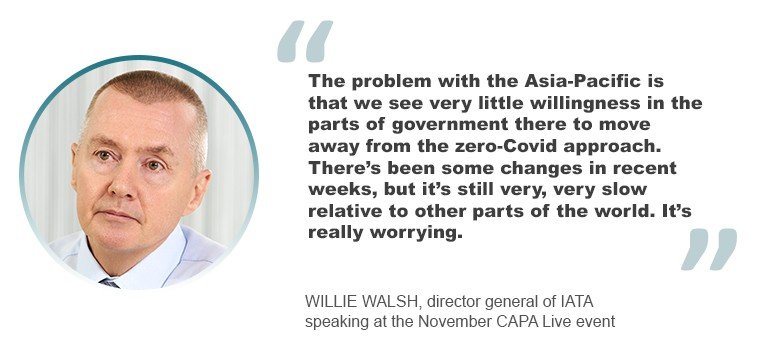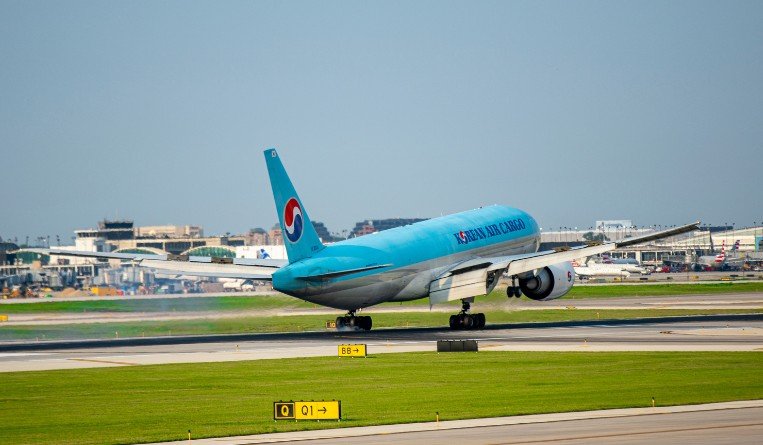The robust cargo market in Asia-Pacific is expected to continue through the rest of the year – with demand set to exceed levels seen both before and during the onslaught of the coronavirus pandemic.
As of September, Asia-Pacific airlines saw air cargo demand – measured in freight tonne kilometres (FTK) – increase by 23.3% year-on-year after accelerating 26% in August, driven by the ongoing recovery in the global economy and strong consumer and business sentiment that continued to boost trade activity.
The Association of Asia Pacific Airlines (AAPA) said this positive trajectory in air cargo will persist into next year, although the level of growth is still largely dependent on border reopenings in the region.
“Cargo demand in 2021 is exceeding not only 2020 levels but also 2019 levels and is looking good not only for the peak but well into 2022,” Subhas Menon, director general of the Kuala Lumpur-based group, told Asia Cargo News.
Menon added that in the short-term, prolonged congestion at major shipping ports and associated global supply chain disruptions have also led to businesses turning to air cargo to speed up deliveries, providing a boost to air cargo markets.
“Port congestion is a temporary additional boost,” Menon said. “Cargo market buoyancy is generally driven by demand for intermediate goods as manufacturing picks up.”
Capacity constraints to continue
Meanwhile, despite the buoyant cargo market forecast for Asia-Pacific airlines, slow border reopenings are dragging the speed of recovery in the region as most countries stick to tight border controls even as vaccination rates top out, further dampening recovery prospects in the pandemic-battered airline industry.
“Lack of bellyhold space is expected to continue into 2022 as markets haven’t opened up yet, even though roadmaps to opening international borders are being announced by various governments,” Menon told Asia Cargo News. “It would seem vaccination rates could be a determining factor when it comes to border restrictions being eased and the corresponding rate of recovery.”
Countries such as Japan, South Korea, Australia, Malaysia and Singapore continue to implement tight restrictions for non-essential travel, while mainland China and Hong Kong use a strict “zero Covid” policy that mandates weeks of quarantine.
The region’s cautious stance is in contrast with Europe and North America, where vaccinated travelers, including tourists, can travel freely with minimal limitations if their Covid test results are negative.
Slow recovery will put APAC carriers in “very precarious” state
Separately, Menon warned that the continued border restrictions in the region could prove catastrophic to the airline industry.
Asia was by far the worst-performing region in 2022, according to IATA’s latest forecast, which noted that “within-Asia” traffic in terms of RPKs is expected to be nearly 90% below 2019 levels for the full year 2022, which it said is “effectively negligible improvement from the present position.”
“The forecast for Asia Pacific represents our best estimate. I think it’s probably the best way to recommend an economic forecast looking at the measures that governments have introduced and assessing their willingness to reduce or remove the restrictions. And principally, that's killing demand,” Willie Walsh, IATA’s director general, said during the November CAPA Live event.
He noted that when these restrictions are relaxed and removed, demand comes back “very, very quickly.”
“The problem with the Asia-Pacific is that we see very little willingness in the parts of government there to move away from the zero-Covid approach. There’s been some changes in recent weeks, but it’s still very, very slow relative to other parts of the world,” Walsh added.
“It’s really worrying.”

The IATA chief went on to say that although Asia-Pacific airlines have benefited from strong cargo, the slow recovery remains a “major problem.”
“I think you've got to worry about the region in terms of the long-term opportunities for the industry,” Walsh said. “If we don't see a strong recovery or a stronger recovery than the scenario we’ve painted for 2022, it is going to leave a number of airlines in a very precarious financial position. And we know that they’re on the brink at the moment.”
“I think it is a worrying time, certainly for some of the airlines in the region,” Walsh continued.
No consolidation seen
Nonetheless, despite the challenging environment for airlines, IATA doesn’t expect consolidation to happen – although noted instead that now could be the time for new entrants to come in.
“Given the perilous nature of airline balance sheets, I don’t see much consolidation happening, unless you get the consolidation that’s, in effect, forced upon airlines,” Walsh said. “I don't see airlines being particularly brave in the current environment to use whatever strength they have in their balance sheet to pursue M&A activity.”
“I think you've got to look at, have the barriers to entry reduced and are we likely to see more new entrants looking at the gaps that are available? And I think that’s a real prospect because the traditional airlines balance sheets in effect will be shot.”
“Given the nature of the incumbent airlines, it may well be an opportunity for some new entrants,” Walsh added.
Charlee C. Delavin



